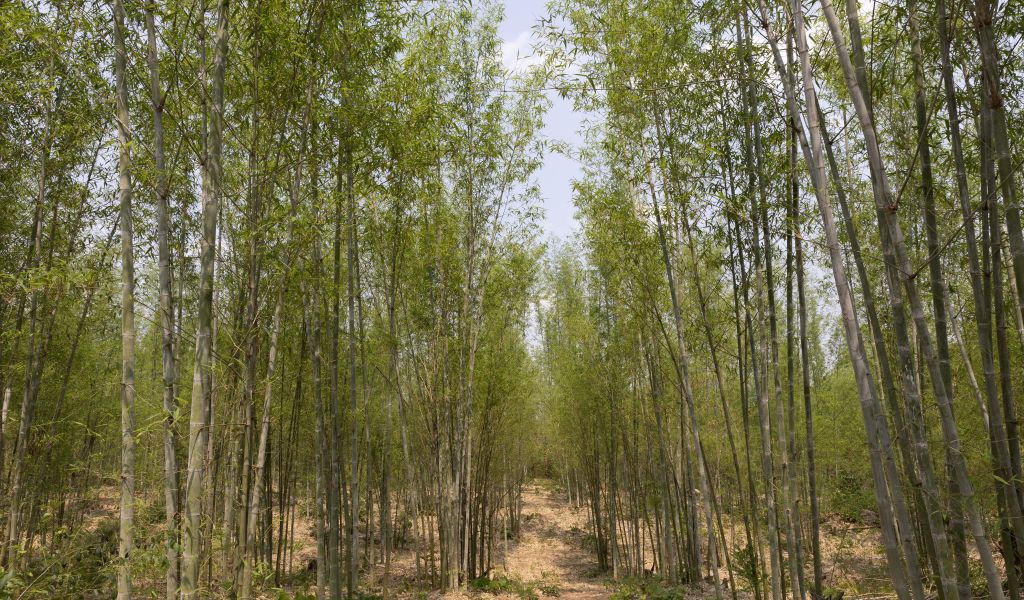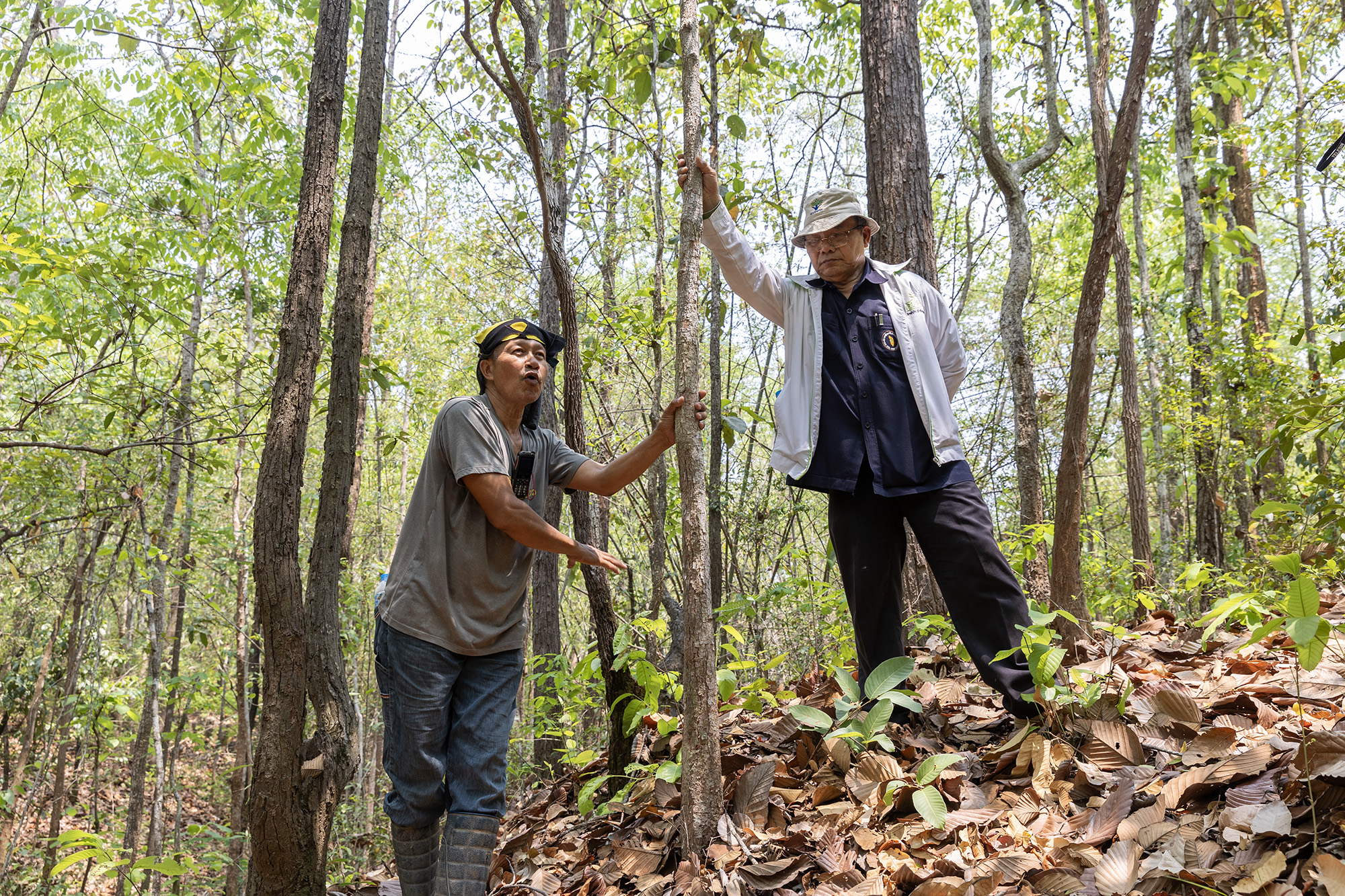Living with the forest: The Ngao model

During the week of 6–10 May, I was part of a RECOFTC team visiting Ngao district, Lampang in northern Thailand. Ngao Model Forest is a member of the Regional Model Forest Network–Asia (RMFN–Asia), which brings together diverse groups of stakeholders across Model Forests in the continent to collaboratively manage forest landscapes. RECOFTC has been Secretariat of RMFN–Asia since January 2024.
Model Forests
The term ‘Model Forest’ may best be understood as encompassing both places and processes. Geographically, a model forest landscape may cover forests, farms, protected areas and human settlements. As a process, it is about people and forests. It is built on inclusive partnerships between diverse groups and individuals working together to address the social, environmental and economic needs of forest communities.
Model Forests aim to find practical solutions to challenges related to forest conservation, economic development and community well-being. By bringing together diverse stakeholders, they facilitate knowledge exchange, capacity building and collective action. They also serve as platforms for testing and demonstrating innovative approaches to sustainable forest management. In many ways, they are real-world laboratories where various stakeholders come together to address complex forestry issues through an inclusive, partnership-based approach.
In Asia, Model Forest landscapes may include forests, farms, rivers, coasts, towns, mountains, protected areas and other features important to peoples’ lives and livelihoods. Stakeholders often include smallholders, local community associations, Indigenous Peoples, ethnic minorities, government agencies, academic institutions and industries.

The Ngao Model Forest
The Ngao Model Forest was established in 2000 and covers 175,159 hectares. Over these past two decades, local communities have become actively involved in maintaining their forests – the watershed forest in Ban Kun Heng and the community forest in Ban Pong.
On our trip to Ngao, we were looking to gain insights into developments in the landscape and the activities of the communities living there. We wanted to better understand how relevant stakeholders have been participating in forest restoration and management.
Ban Kun Heng
Our first destination was Ban Kun Heng village. The watershed forest in the area supports local communities, including the Yao and Tai Lue ethnic groups.
Prawat Kachai, Head of the Watershed Conservation and Management Suboffice, Ban Kun Heng, notes that local communities have categorized the forest landscape into two distinct areas. “We call the outer edge of the forest the 'egg white’ and the inner circle is called the 'egg yolk’,” he explains.
The ‘egg white’ encompasses areas inside which people are allowed to enter and collect forest products for use. The ‘egg yolk’ is the watershed forest, which is strictly out of bounds. “Entering the ‘egg yolk’ and collecting forest products is prohibited,” Kachai adds.
This division of the forest into areas for use and areas under strict protection has worked very well, and local communities are at the forefront of management and protection. Recognizing the value of a healthy forest as those directly reliant on it, community members have taken ownership of restoration and management activities. The village committee that manages and controls the use of forest products is composed of local community representatives, including leaders from the Yao and Tai Lue ethnic groups.
Ban Pong
In neighboring Ban Pong village, the community forest covers an area of 88 hectares (550 Rai). Although we are visiting during the peak of the Thai summer month, the forest is lush. Members of the local forest fire prevention group collect seasonal edible plants when we arrive so that we can lunch together.
The forest fire group was established in 2007, when the village started a campaign to restore its forest and implement forest fire prevention measures. One of the most effective measures they started that year has been the building and maintenance of cement check dams, which help increase the water-retention capacity of the forest soil.
Check dams work by reducing the velocity of rainfall runoff. This is particularly significant in the context of a changing climate, which has caused rainfall patterns to shift. With check dams installed, the forest environment can retain moisture even when it rains heavily and in short spurts.
The forest fire group may also be seen as a gender equality and social inclusion success story. Of the 10 current members of the group, eight are women. The group work together to patrol the forest and help put out fires. When needed, they also coordinate with the Subdistrict Administrative Organization.
The village leadership is also helmed by a woman. Rachaprapa Kampat, the village head, talks to us about the self-sustaining nature of forest ecosystems. “The most active role the community currently takes on is in preventing forest fires,” she says. “With moist forest soil, there is no need for us to engage in any plantation. The forest restores itself and become healthy on its own.” Referring to the cement check dams, she adds, “We build these dams for long-term use. We just need to make sure that the forest gets moisture from the water retained.”
A model of their own
Community efforts have improved forest health across the Ngao Model Forest landscape. They have developed configurations of sustainable forest management ideally adapted to their needs and the specific features and circumstances of their landscape. Over the years, it has been the local communities that have led local conservation.
###
Nattarikarn Thongsomboon is RMFN–Asia Secretariat Officer.
The Regional Model Forest Network-Asia is supported by the Global Leadership Program under the Department of Natural Resources, Government of Canada.
RECOFTC’s work is made possible with the support of the Swiss Agency for Development and Cooperation and the Government of Sweden.

